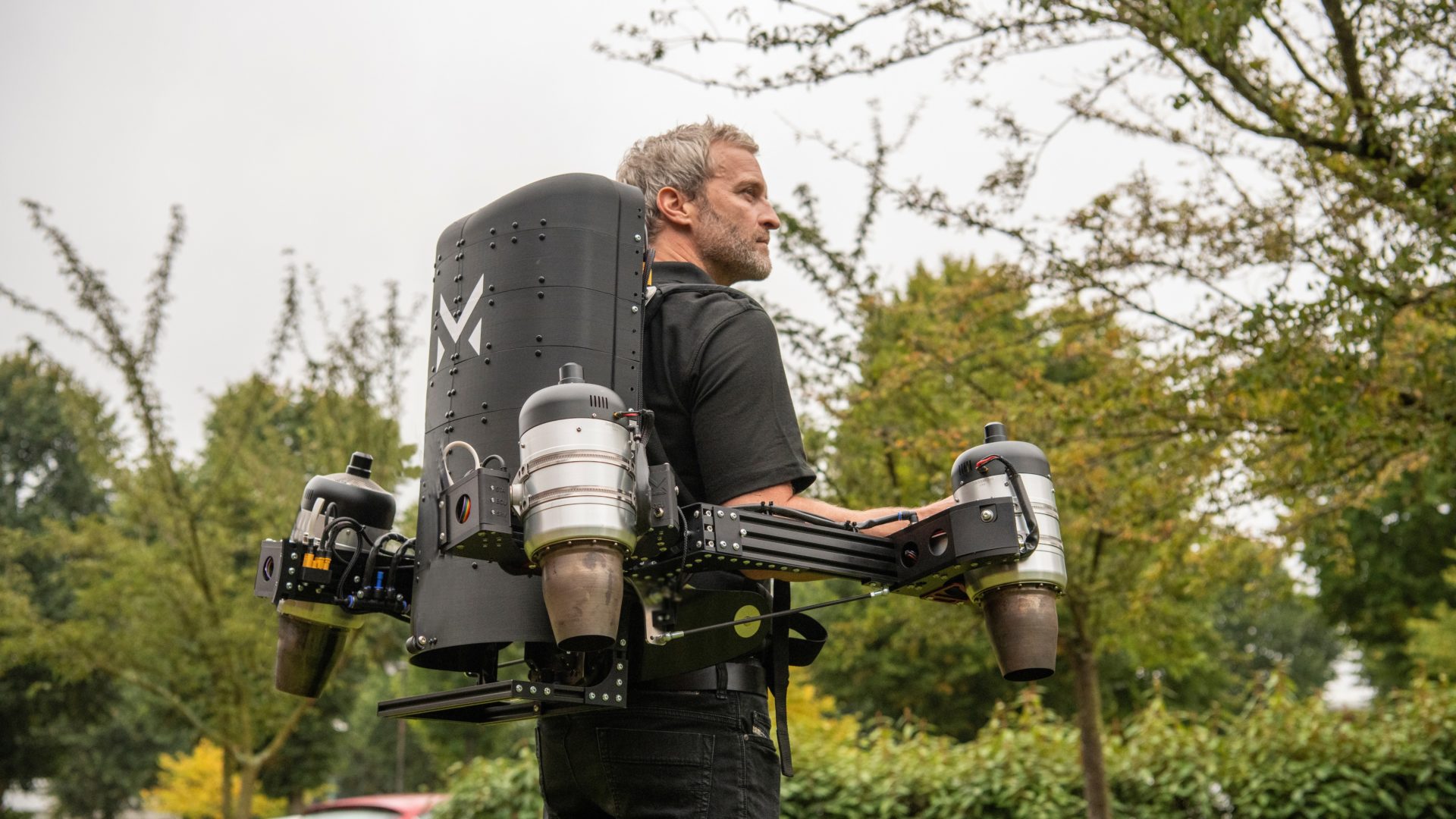
A jetpack that can be used on construction sites for challenging maintenance and inspection tasks has been unveiled by its creator, Maverick Aviation.
The jetpack is the brainchild of Hollywood animatronics expert Matt Denton and Royal Navy commander Antony Quinn.
It uses a unique vertical take-off and landing (VTOL) system and is designed to be operated hands-free, allowing people to make safer flights, and precision landings on structures that are difficult to access.
The Maverick Jetpack can also be reconfigured as a heavy-lift drone that can be operated remotely. Maverick Aviation claims the device can carry 10 times the payload of current similarly sized systems on the market.
The jetpack is unusually made using advanced manufacturing techniques like 3D printing and materials including aluminium, titanium and carbon fibre. It will travel at between 10mph and 30mph depending on the task.
Early work on the control system software was funded by a £97,000 grant from Innovate UK, secured by Maverick’s grant partner Catax. This money also helped pay for patent applications and the creation of a concept demonstrator. The team has since received more funding, including grants and business mentorship from the University of Southampton Science Park.
The first manned test flight is scheduled for next summer and the company is about to start seeking further investment to take the jetpack to market.
Antony Quinn, CEO and co-founder of Maverick Aviation, said: “The jetpack uses the same sort of jet engines that you see on a passenger plane, only ours are the size of a rugby ball.
“What is unique about what we’re doing is the computer-controlled autopilot system that makes flying effortless and easy to control with precision. That’s how we have changed jetpacks from exciting to useful.
“It’s so intuitive to fly that the cost of training is going to be low, so you’re going to have all sorts of professionals suddenly able to work in the most inaccessible environments safely and quickly.
“I realised that the growing onshore and offshore wind industry really needed a solution like this. Their engineers climb up ladders inside these structures for hours each day and, in an emergency situation, it’s almost impossible to get down quickly. Drones can be useful for inspections, but in many circumstances you need to get an engineer up there.
“During tours of Afghanistan and Iraq, the number of possible use cases just kept on mounting and I realised how big the opportunity was. The potential is almost endless.”











